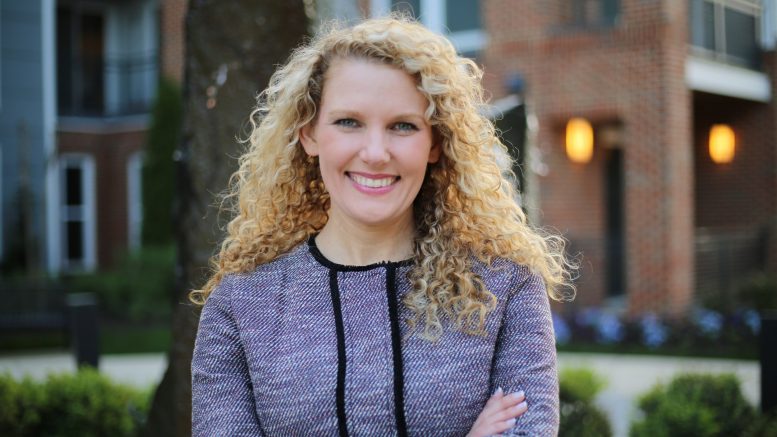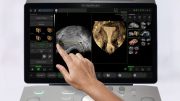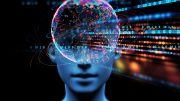By Colleen Cunningham-Greene, Global General Manager – Healthcare, DataRobot
The healthcare industry is changing at an astronomically fast pace. It has never been under more pressure to improve the quality of care and patient outcomes while also reducing costs, improving efficiency, and harnessing the latest developments in drug therapy.
As one of the most data-rich industries in the world, the healthcare industry has come a long way in terms of technical and medical advances. However, it is still lagging behind in how it uses the data captured by doctors and nurses at the frontline, hospital administrators, and pharmaceutical manufacturers, among others, to drive decisions and improve healthcare delivery.
The challenge now is about how to unlock the true value of billions of data points stored in electronic medical records (EMR), diagnostic data, clinical trials, and medical claims information and transform them into insights and predictions. The absolute objective is to ensure that caregivers, providers, and health insurers have the information and tools they need to streamline and enhance processes throughout the patient lifecycle and maintain the human touch at the same time.
The adoption of artificial intelligence (AI) and machine learning is proving to be the answer to this, acting as the catalyst for change for the healthcare industry overall and providing much-needed decision support for doctors and nurses.
Dr. Eric Topol, author of Deep Medicine: How Artificial Intelligence Can Make Healthcare Human Again, explains: “The greatest opportunity offered by AI is not reducing errors or workloads, or even curing cancer, it is the opportunity to restore the precious and time-honored connection and trust—the human touch—between patients and doctors.”
This statement strikes a chord. As the age of the UK population continues to rise and patient numbers increase, staff shortages become more pronounced, and the pressure on frontline staff to deliver services within strict timeframes and with squeezed budgets is immense. There are many opportunities to create more efficient workflows, best practices, and processes so that they are ‘fit for purpose’ and meet the demands of the digital age. Replacing manual data analysis with machine learning is an entirely logical and practical solution. It makes sense to utilise advances in data science to speed up data processing and forecasting so that decisions about treatment and service delivery can be made faster and more reliably.
Fortunately, developments in both AI and machine learning mean that multiple functions, departments, and organisations in the public and private sector have already been able to use these technologies to gain valuable insights in hours, rather than weeks or months. It is augmenting the decision-making process at the bedside, in HR, or during clinical trials.
AI and machine learning have already been used to identify patients at risk for hospital acquired infections, such as sepsis, or complications post-discharge. Predicting where cases might occur so that patients can be advised and caregivers can ensure early intervention helps to reduce incidences of infection and readmission rates, lengthy hospital stays, and associated costs. When used to drive patient monitoring systems, it can also identify which patients are less likely to follow prescribed drug regimes (medication adherence) or those that are more likely to suffer from opioid abuse.
From an operational perspective, machine learning has optimised the ability to forecast staffing levels by day, week, and department and address in advance the potential risk of employee churn or burnout. It has contributed to more accurate predictions about average length of stay (ALOS) for inpatient admissions by type of procedure, as well as peaks in patient volumes in intensive care and accident and emergency departments. It also helps in managing patient no-shows, which cost the NHS dearly in wasted time and resources. It has even helped to identify potential billing or payment anomalies across the supply chain and pinpoint fraudulent claims in the private medical sector.
Clearly, enhancing patient experience needs to be balanced with optimising healthcare delivery and cost, but there is potential for AI and machine learning models to deliver data-driven opportunities for performance improvement and best-practice outcomes.
As in other industries, its adoption is limited by the current shortage of data scientists available to develop models that can track trends, classify feedback, segment patient populations, and make predictions in the near- and long-term.
Fortunately, the solution to this skills gap issue lies in automated machine learning which removes the need to learn code and automates many of the repetitive steps in the model building process. This can help data analysts, data engineers, and software developers who are already employed in various healthcare departments and organisations to become citizen data scientists. This allows them to benefit from the expertise of others so that they can use their specialist knowledge to fine tune and deliver the results needed to improve services more quickly.
At a time when patient demand for access to services is high, automated machine learning can help healthcare professionals better understand what patients want and need, where gaps exist, and where opportunities for continuous improvement and innovation lie. Enabling the healthcare industry to focus on delivering highly personal and tailored care proves that technology can be a positive agent for change.
About the Author:
Colleen’s focus at DataRobot is to enable every healthcare organisation to become more AI-driven.
Prior to joining DataRobot, she worked for a number of healthcare organisations, ranging from start-ups to a health insurance company in the Fortune Top 50. A pioneer in value-based care and reimbursement models, Colleen is passionate about revolutionising healthcare by reducing costs, delivering consumer-driven services, aiding the management of chronic complex populations and reducing system inefficiencies. She holds an M.B.A. from University of Maryland University College and a Bachelor of Science in Healthcare Administration from Western Kentucky University.





